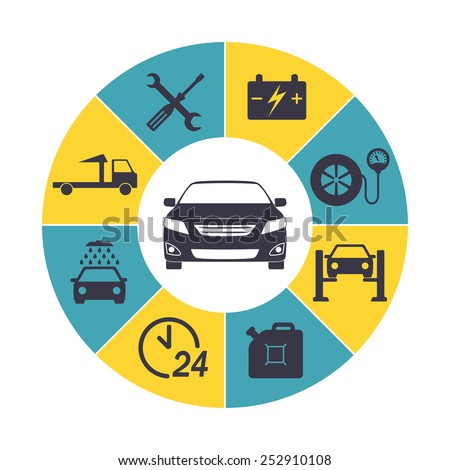Recognizing Your Auto'S Caution Lights: What Do They Truly Mean?
Recognizing Your Auto'S Caution Lights: What Do They Truly Mean?
Blog Article
Short Article Developed By-Boye Forbes
When you lag the wheel, those glowing warning lights on your dashboard can be a little bit perplexing. Do you understand what they're attempting to tell you regarding your auto's health and wellness? Recognizing the significance of these lights is essential for your security and the long life of your car. So, Highly recommended Website following time one of those lights pops up, wouldn't you intend to understand its message precisely and take the required steps to address it?
Common Warning Lights and Interpretations
Identify common warning lights in your auto and understand their definitions to ensure risk-free driving.
The most regular caution lights include the check engine light, which signifies concerns with the engine or exhausts system. If this light comes on, it's vital to have your vehicle inspected quickly.
The oil pressure advising light suggests low oil stress, needing immediate focus to prevent engine damages.
A blinking battery light may suggest a damaged charging system, possibly leaving you stranded otherwise addressed.
The tire pressure tracking system (TPMS) light notifies you to reduced tire pressure, affecting lorry stability and gas performance. Overlooking this can cause unsafe driving conditions.
The abdominal muscle light suggests an issue with the anti-lock braking system, jeopardizing your capacity to stop promptly in emergency situations.
Finally, the coolant temperature level advising light warns of engine overheating, which can result in severe damage otherwise solved quickly.
Recognizing these typical caution lights will help you attend to issues immediately and keep secure driving problems.
Relevance of Prompt Attention
Understanding the typical caution lights in your cars and truck is only the very first step; the value of promptly addressing these cautions can not be highlighted enough to ensure your safety and security when traveling.
When a caution light illuminates on your dashboard, it's your vehicle's method of connecting a prospective problem that requires focus. Neglecting these warnings can cause extra severe issues in the future, compromising your security and possibly costing you much more out of commission.
Trigger attention to alerting lights can prevent breakdowns and mishaps. As an example, a blinking check engine light might indicate a misfire that, if left unattended, can create damages to the catalytic converter. Resolving this without delay can save you from a costly repair work.
In a similar way, a brake system warning light could indicate low brake fluid or used brake pads, crucial parts for your safety and security when driving.
DIY Troubleshooting Tips
If you notice a caution light on your control panel, there are a couple of do it yourself fixing tips you can attempt prior to seeking professional assistance.
The very first step is to consult your car's manual to comprehend what the specific warning light shows. In some cases the concern can be as easy as a loose gas cap setting off the check engine light. Tightening the gas cap might fix the issue.
Another usual issue is a low battery, which can trigger various warning lights. Examining the battery connections for corrosion and ensuring they're safe could deal with the trouble.
If a warning light persists, you can attempt resetting it by separating the automobile's battery for a few mins and after that reconnecting it. Additionally, examining your lorry's liquid degrees, such as oil, coolant, and brake fluid, can assist repair cautioning lights related to these systems.
Conclusion
To conclude, recognizing your car's warning lights is vital for maintaining your lorry running smoothly and securely. By quickly attending to pop over to this web-site and understanding what they suggest, you can stay clear of pricey repair services and potential breakdowns.
Keep in mind to consult your vehicle's manual for particular details on each advising light and do something about it appropriately to make sure a trouble-free driving experience.
Remain informed, remain risk-free when traveling!
